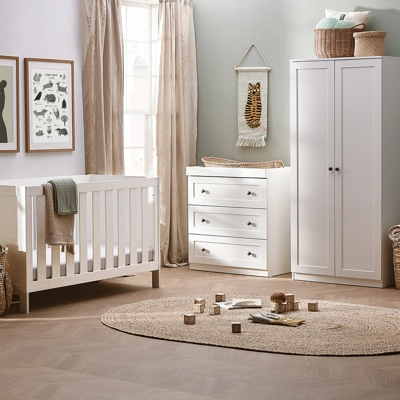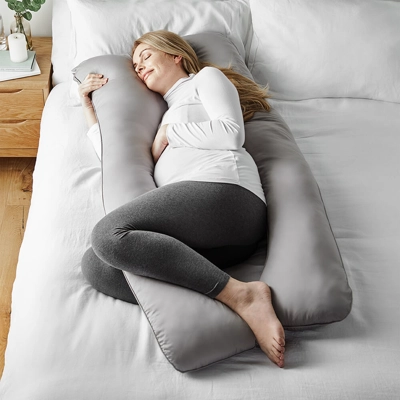
Sale
New In
Pushchairs & Strollers
Car Seats
Nursery
Feeding
Family Hub

Includes Buffet Highchair, Mealtime set, Silicone tray

Includes Clic 2 stroller, Clic stroller bag and rain cover


For the best night’s sleep in every trimester
Every parent deserves to have a calm and confident birth experience, and that doesn’t change if it happens to be in a hospital setting (planned or unplanned!). In fact, I would say it’s even more important to be mindful of what’s around you in a more clinical environment.
Oxytocin is the hormone we need for birth to get started and progress through the various stages. We actually feel this hormone in everyday life too – it’s the one that gets produced when our brain perceives our environment as safe, calm and comfortable. So that might be your bedroom in the evening after a long busy day. It’s also the one we produce when we orgasm – so take a moment to think about what the environment is like in these scenarios.
Cosy? Familiar? Unobserved? Now compare that to a hospital setting. It’s quite the opposite, isn’t it?
When the brain clocks an unfamiliar environment, it very cleverly puts us into high alert. The brain’s main job is to keep us safe – so it produces stress hormones such as adrenaline and cortisol to help us fight or get away from any danger or threat (the fight or flight response). This reaction is the opposite of what we need to birth a baby – it slows things down by reducing the oxytocin flow and makes contractions painful through the tension and reduction of endorphins (our natural pain reliever).
Even if you are having an epidural and induction, it’s still a very good idea to support the natural production of these hormones alongside the synthetic forms so your body processes them more effectively, keeping you and your baby much more comfortable and in control.
It uses the five senses to feed it information. So all we need to do is mindfully use those senses to create familiarity and comfort in what is an unfamiliar and less-cosy environment. If you are birthing your baby in a hospital setting, here are the things you can adapt and use to create a more oxytocin-friendly environment. Remember you need to be practicing these things at home during your pregnancy to make them familiar to you and build that link in your brain to your lovely, safe and cosy home environment.

Scent
Aromatherapy is so versatile and incredibly effective. Just think about when you open up a bottle of sun cream. It transports you back to your holidays instantly! Think about how you can build in using aromatherapy at home on a regular basis to relax you. Then when in hospital, you could use a room spray, pillow spray on your bedding or take a roller ball for your pulse points. Lavender is a great pregnancy-safe scent which is also relaxing, but you could also use orange or lemon oils to uplift you too. Clary sage is a great one to use to encourage contractions, but only from 37 weeks onwards.
Sight
Going back to the fact that oxytocin is best produced when in a cosy environment, it’s probably no surprise that the bright strip lights in a hospital room aren’t so helpful. Once any examinations are complete or medication has been administered where the midwife would need good light, you can turn off the lights and switch on a few strings of battery powered fairy lights, or even a star projector light (my favourite!). This will instantly transform the space from a white stark one to a cosier intimate one. If your midwife needs to turn the lights on again, you could pop an eye mask on to stay in your zone and prevent the brightness from sending the ‘alert signal’ to your brain.
Positive affirmation cards and funny, uplifting films or TV shows are also great things to consider when it comes to what you are looking at and absorbing during your labour.
Sound
If you’ve been listening to mindful birth relaxation audios at night throughout your pregnancy, then listening to them in hospital could be really helpful for you too. Or perhaps a playlist full of nostalgic, feel-good songs. Whatever it is for you, music or audios will drown out the sound of equipment and voices outside of the room and tell your brain that this is a great place to be! Be sure to pack headphones too, in case you are waiting in a more communal space at any point.
Your pillow from your bed and/or your maternity pillow are great ways to appeal to the sense of touch. They are cuddly, smell like home and familiar. Hospital pillows are none of these things! So make sure you do take one with you. Your dressing gown, slippers and a comfortable nighty are also very important. Familiarity is key, remember!
The touch from your birth partner is not to be underestimated too. Simply holding hands or them resting their hand on a part of your body will help to signal to your brain subconsciously that you are safe.
I’m going to add positioning here too, because the way you are positioned will support your comfort levels and the way baby moves down the birth path. Being upright, forward and open (UFO) is an optimal way to be. If you are birthing in a labour ward room, you may be needing to be monitored or you may be having pain relief or an induction drip administered. There are versions of each of these that can allow you to be more mobile rather than being restricted to lying down on the bed – just ask your midwife to give you the mobility-supportive option. If you do need to lie down for a rest or if the mobile option isn’t available for you, then positioning yourself on your side so that your bottom isn’t being pushed up (and narrowing the birth path) and propping your knees open with pillows or a peanut ball will support the physiology of birth and help you to be more comfortable too. You can also ask for a birth ball to be put onto the bed to rest on too.
Last, but not least, taste is really about keeping your energy up during labour. Think of labour as a highly physical activity, and one that you need to keep fuelled for. Take your favourite sweets, chocolate, dried fruit – whatever you love that’s going to give you a regular dose of energy. Small spoons of honey are also a great way to take in something without having to chew and eat, if you’re not feeling hungry. Hydration is also equally important – regular sips of water through a water bottle with a bending straw (saves having to tip your head up!) will help you to make sure that exhaustion is not caused by dehydration.
Your midwife/obstetrician will support you with all of these things, but it’s a good idea to make sure your birth partner is up to speed with the importance of your environment so they can be in charge of setting it all up and keeping it going for you too. Hiring a doula to support you both in these areas is something important to consider too. Doulas support parents in all birth settings, and you can seek written permission from your head of midwifery ahead of time if there are Covid restrictions on the number of birth partners in your hospital. Birth is a team effort, after all!
By putting a little effort into these areas and packing your ‘oxytocin kit’, you will be setting yourself up for a calm and comfortable birth experience. Which is exactly what you deserve.

Emiliana, mum of two, is a hypnobirthing teacher and doula. Having experienced two home births with her own children and one planned abdominal birth as a surrogate for her best friend, Emiliana knows the importance of birth preparation first hand. She created The Mindful Birth Group hypnobirthing courses to be inclusive of all birth preferences and the information, tools and techniques can be used however a baby is born. Whether it’s at home, at a birth centre, labour ward or abdominally – every parent deserves to have a calm and confident birth experience.